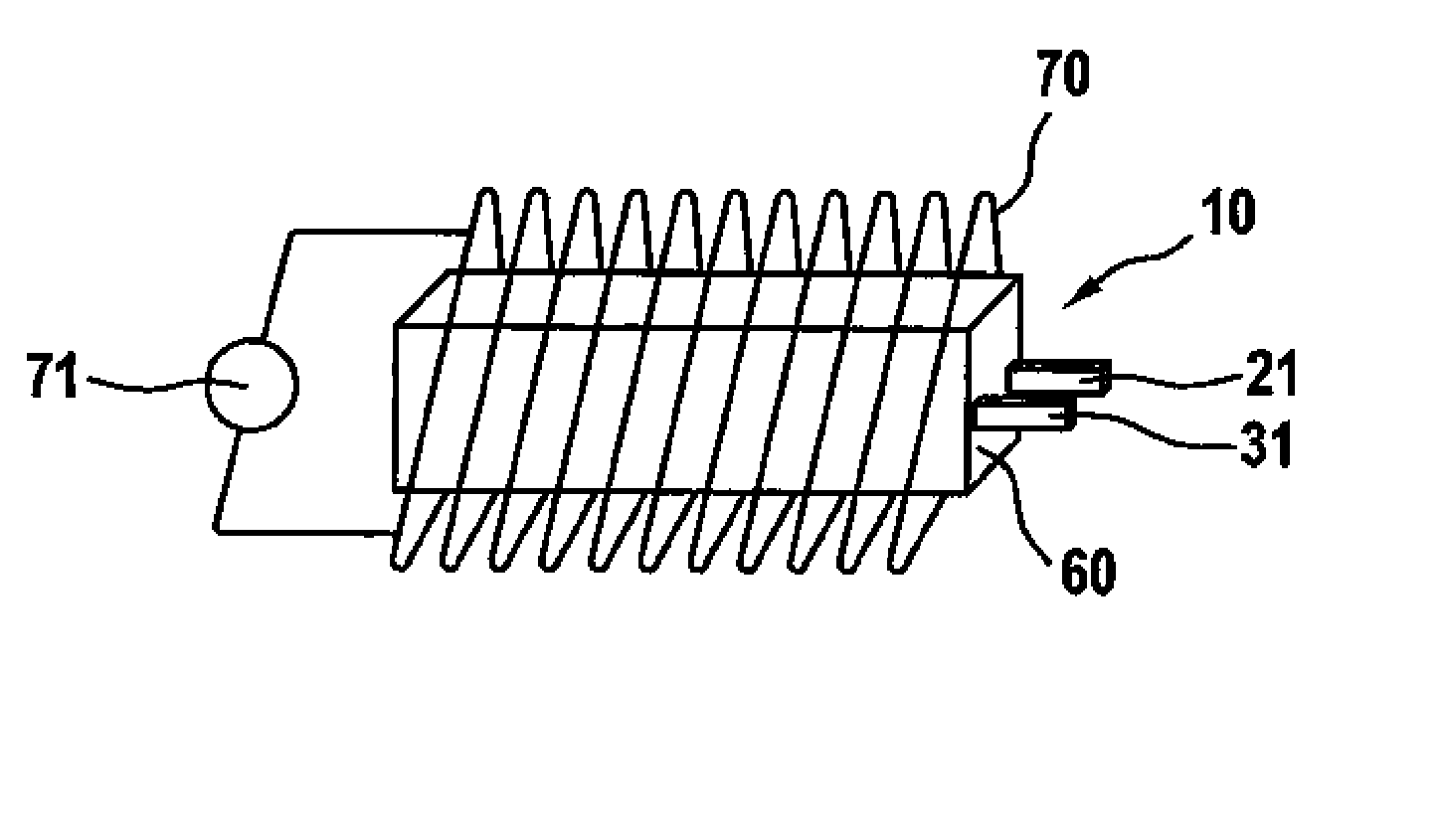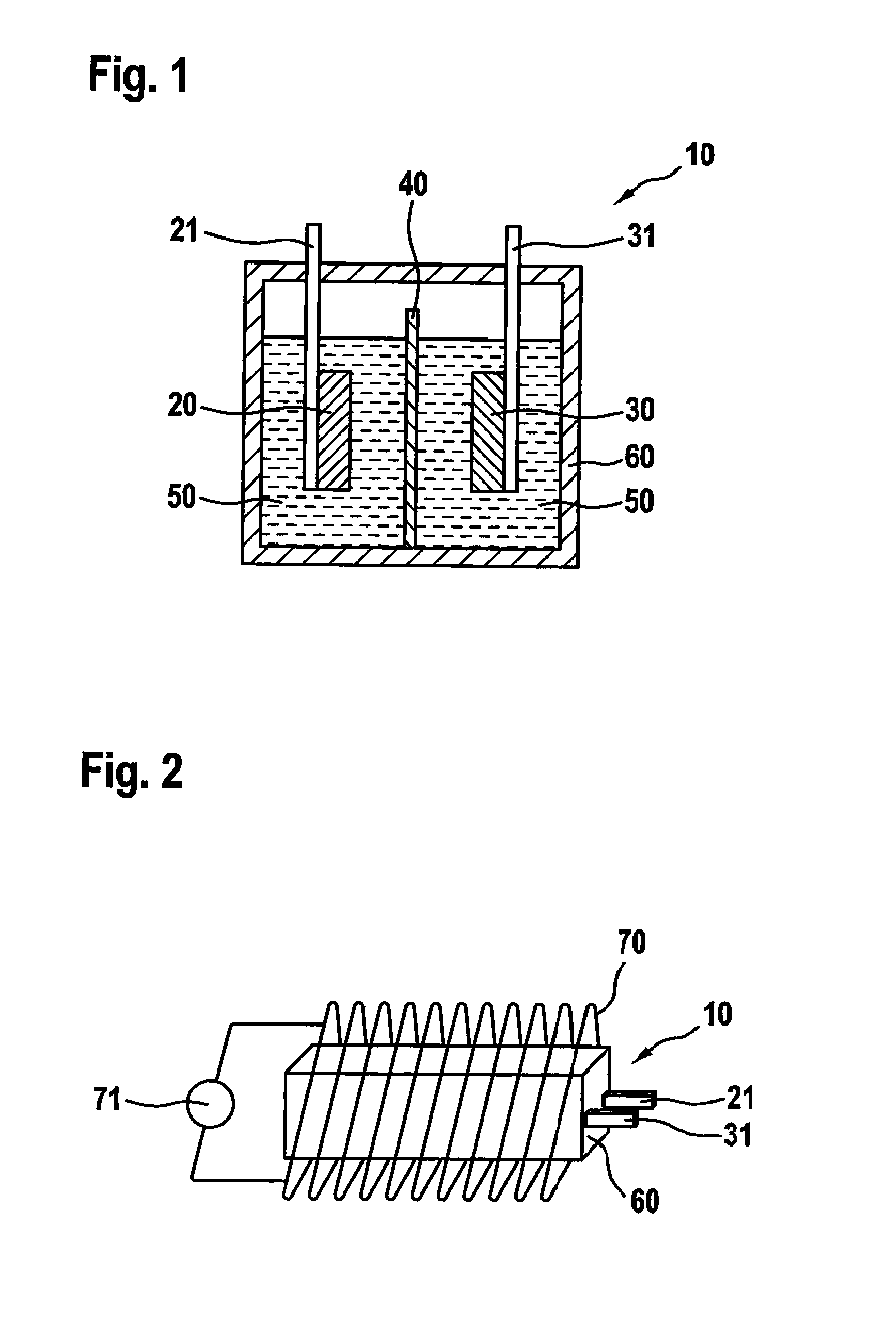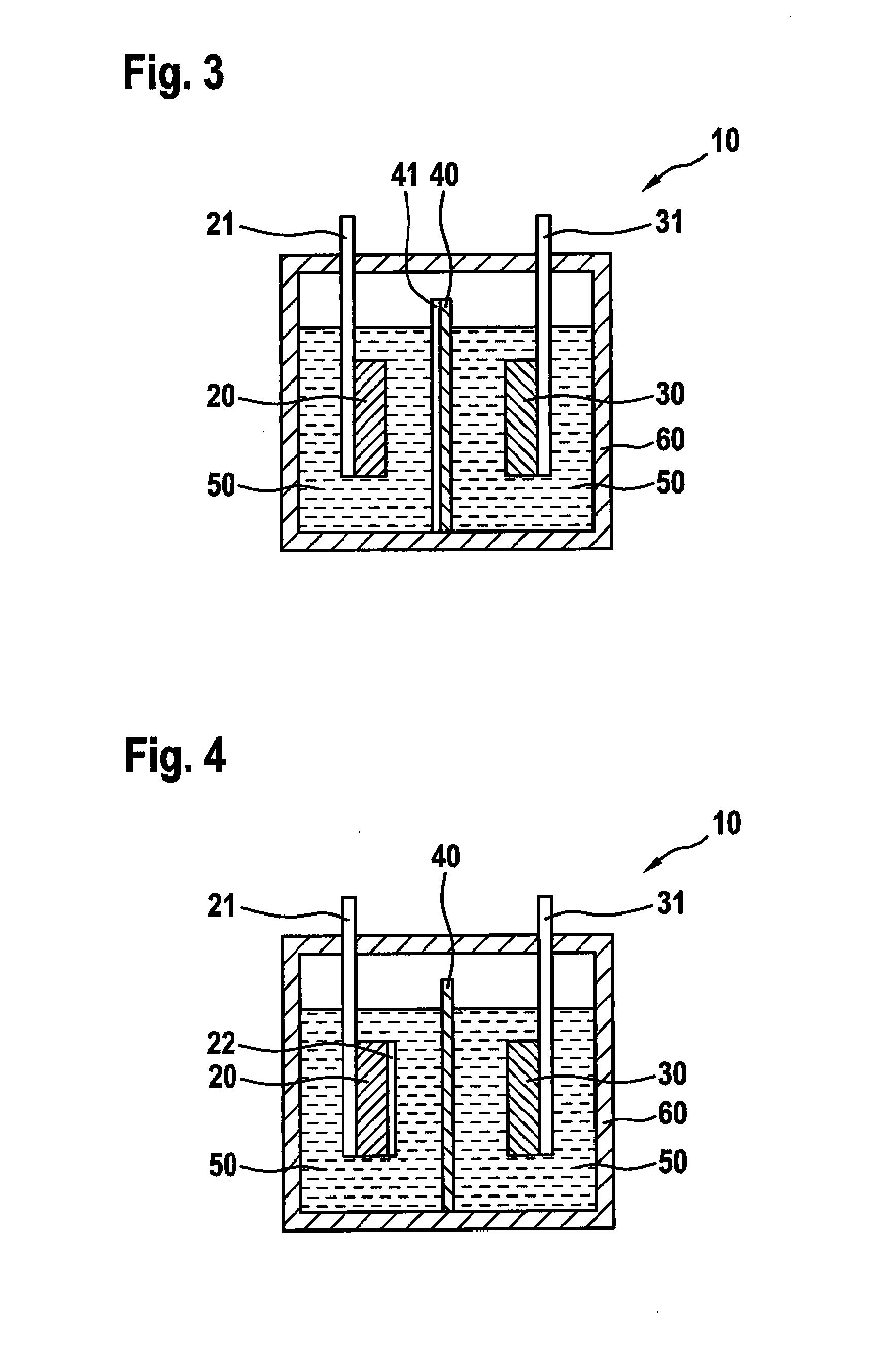Method for reducing the dendritic metal deposition on an electrode and lithium-ion rechargeable battery which uses this method
a technology of dendrite metal deposition and electrode, which is applied in the direction of secondary cell servicing/maintenance, sustainable manufacturing/processing, and final product manufacturing, etc., can solve the problems of significant prolongation of the cyclical and calendar service life of lithium batteries, suppress the formation of dendrites, and reduce dendrite metal deposition. , inhibit or suppress dendrite growth
- Summary
- Abstract
- Description
- Claims
- Application Information
AI Technical Summary
Benefits of technology
Problems solved by technology
Method used
Image
Examples
Embodiment Construction
[0029]FIG. 1 shows a schematic cross sectional representation of a conventional lithium-ion rechargeable battery 10. An anode 20, which includes active anode material, is situated on an anode arrester 21. A cathode 30, which includes active cathode material, is situated on a cathode arrester 31. A separator 40 prevents interior short circuits from occurring between electrodes 20, 30, by isolating two electrodes 20, 30 spatially and electrically from one another. Situated between two electrodes 20, 30 is a liquid electrolyte 50. The latter typically includes a solvent and a lithium-containing salt. Two electrodes 20, 30, separator 40 and electrolyte 50 are situated together in a housing 60. Both anode arrester 21 and cathode arrester 31 penetrate housing 60, and thus enable the electrical contacting of anode 20 and cathode 30. If this lithium-ion rechargeable battery 10 is operated using non-classic electrode materials, for example, as a lithium-sulfur rechargeable battery or a lithi...
PUM
 Login to View More
Login to View More Abstract
Description
Claims
Application Information
 Login to View More
Login to View More - R&D
- Intellectual Property
- Life Sciences
- Materials
- Tech Scout
- Unparalleled Data Quality
- Higher Quality Content
- 60% Fewer Hallucinations
Browse by: Latest US Patents, China's latest patents, Technical Efficacy Thesaurus, Application Domain, Technology Topic, Popular Technical Reports.
© 2025 PatSnap. All rights reserved.Legal|Privacy policy|Modern Slavery Act Transparency Statement|Sitemap|About US| Contact US: help@patsnap.com



